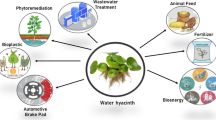Abstract
The study examined effect of two adsorbents on the toxicity of Deoxynivalenol (DON) in growing pigs in a feeding trial. 24 male growing pigs (average initial body weight 11.5 kg) were assigned to one of six dietary treatments: control (uncontaminated diet); control + 0.5% adsorbent I; DON contaminated diet (1.73 mg/kg); DON contaminated diet + 0.5% adsorbent I; control + 0.5% adsorbent II and DON contaminated diet + 0.5% adsorbent II. Two digestibility trials were conducted on the second and fourth week of the feeding period with a sampling period of 7 days to determine the digestibility of the nutrients and the amounts of DON in faeces and urine. At the end of the experiments, the pigs were slaughtered, followed by blood haematology and biochemi analys. These data suggest that the addition of 0.5% modified yeast cell wall or a combination of modified yeast cell wall and bentonite to the naturally DON — contaminated diets reduce the effect of DON on the immune system of pigs but do not play an significant role in detoxification of DON in growing pigs.
Similar content being viewed by others
References
VDLUFA Methodenbuch (1976): 4. Ergänzungslieferung 1999, VDLUFA Verlag Bonn, Deutschland
Bergsjo, B., Langseth, W., Nafstad, I., Jansen, J.H. and Larsen, H.J.S. (1993): The effect of naturally deoxynivalenol — contaminated oats on the clinical condition, blood parameters, performance and carcass composition of growing pigs. Vet. Res.Communications,17 : 283 - 294
Devegowda, G., Raju, M.V.L.N., Afzali, N., and Swamy, H.V.L.N. (1998): Mycotoxins, picture worldwide: Novel solutions for their counteraction. In T.P. Lyons and K.A. Jacques (Eds.) Biotechnology in the feed industry. Proc. of Alltech“s 14 the Annual symposium, Nottingham, U.K., 241 - 255
Döll, S., Dänicke, S., Valenta, H. and Flachowsky, G. (2001): In vitro studies on the evaluation of mycotoxin decontamination agents. Proceeding 23 Mykotoxin Workshop, 28 – 30 Mai, Vienna, Mycotoxin Research, 17A, 2, 214–218
Friend, D.W., Trenholm, H.L., Thompson, B.K., Prelusky, D.B. and Hartin, K.E. (1986): Effect of deoxynivalenol (DON) — contaminated diet fed to growing — finishing pigs on their performance at market weight, nitrogen retention and DON excretion. Can. J. Anim. Sci. 66 : 1075 - 1085
Janes, W., Scholz, W. and Schuster, M. (2000): Deoxynivalenol, zearalenone, ochratoxin A : Quality of feed cereals. Proceeding 22 Mykotoxin Workshop, 5 – 7 June, Bonn, Mycotoxin Research, 16A, 1, 54 - 57
Janes, W. and Schuster, M. (2002) : Bestimmung von Deoxynivalenol (DON) in Körperflüssigkeiten (Blut, Galle, Harn) und Kot des Schweins unter Verwendung von Immunoaffinitätssäulen und LC — UV — detektion. Mycotoxin Research
Pietri, A., Morlacchini, M., Bertuzzi, T., Pallaroni, L. (1999): Performance of growing pigs fed mycotoxin contaminated diets containing a new additive. Recent progress in animal production science. 1. Proc. Of the A.S.P.A. XI I I Congress, Piacenza, Italy, 21–24 June, 1999 (edited by Piva,G., Bertoni, G., Masoero, F., Bani, P., Calamari, L.), PP. 333 - 335
Prelusky, D.B., Gerdes, R.G., Underhill, K.L., Rotter, B.A., Jui, P.Y. and Trenholm, H.L. (1994): Effects of low — level dietary deoxynivalenol on haematological and clinical parameters of the pigs. Natural Toxins, 2 : 97 - 104
Richter, W.I.F., Lepschy von Gleissenthal, J., Lindermayer, H., Holzer, A., Obst, A. und Gareis, M. (1996): Behandlung von mitFusarium culmorum infiziertem Winterweizen mit Konservierungsstoffen. Das wirtschaftseigene Futter, 42, 2, 143 - 160
Rotter, B.A., Thompson, B.K. and Lessard, M.(1995): Effects of deoxynivalenol — contaminated diet on performance and blood parameters in growing swine. Can. J. of Anim. Sci. 75, 3: 297 - 302
Schuh, M., Binder, E.M. and Plank, B. ({dy2000}) : Experimental studies on the effect of two feed additives as detoxification of deoxynivalenol contaminated feed of growing piglets. The 16th International Pig Veterinary Congress, Melbourne, Australia, 17 – 20 Sept.
Shehata, S., Richter, W.I.F., Schuster, M., Scholz, W. and Nowar, M.S. (2000): Adsorption of Ochratoxin A, Deoxynivalenol and Zearalenonein vitro at different pH and adsorbents. Proceeding 22 Mykotoxin Workshop, 5 – 7 June, Bonn, Mycotoxin Research, 16A, 1, 136 - 140
Swamy, H.V.L.N. and Devegowda, G. (1998): Ability of Mycosorb to counteract aflatoxicosis in commerical broliers. Indian J. of Poult. Sci. 33 (3) : 273 - 278
Shehata, S., A., M. (2001): Detoxification of Mycotoxin Contaminated Animal Feedstuffs. Thesis, Department of Animal Production, Faculty of Agriculture, Zagazig University, Egypt
Prelusky, D.B. and Trenholm, H.L. (1991) Tissue distribution of deoxynivalenol in swine dosed intravenously. J. Agric. Food Chem., 39, 748 - 751
Author information
Authors and Affiliations
Corresponding author
Rights and permissions
About this article
Cite this article
Shehata, S., Richter, W., Schuster, M. et al. Effect of deoxynivalenol (DON) on growing pigs and its modification by modified yeast cell wall or modified yeast cell wall and bentonite. Mycotox Res 20, 42–48 (2004). https://doi.org/10.1007/BF02946709
Issue Date:
DOI: https://doi.org/10.1007/BF02946709




